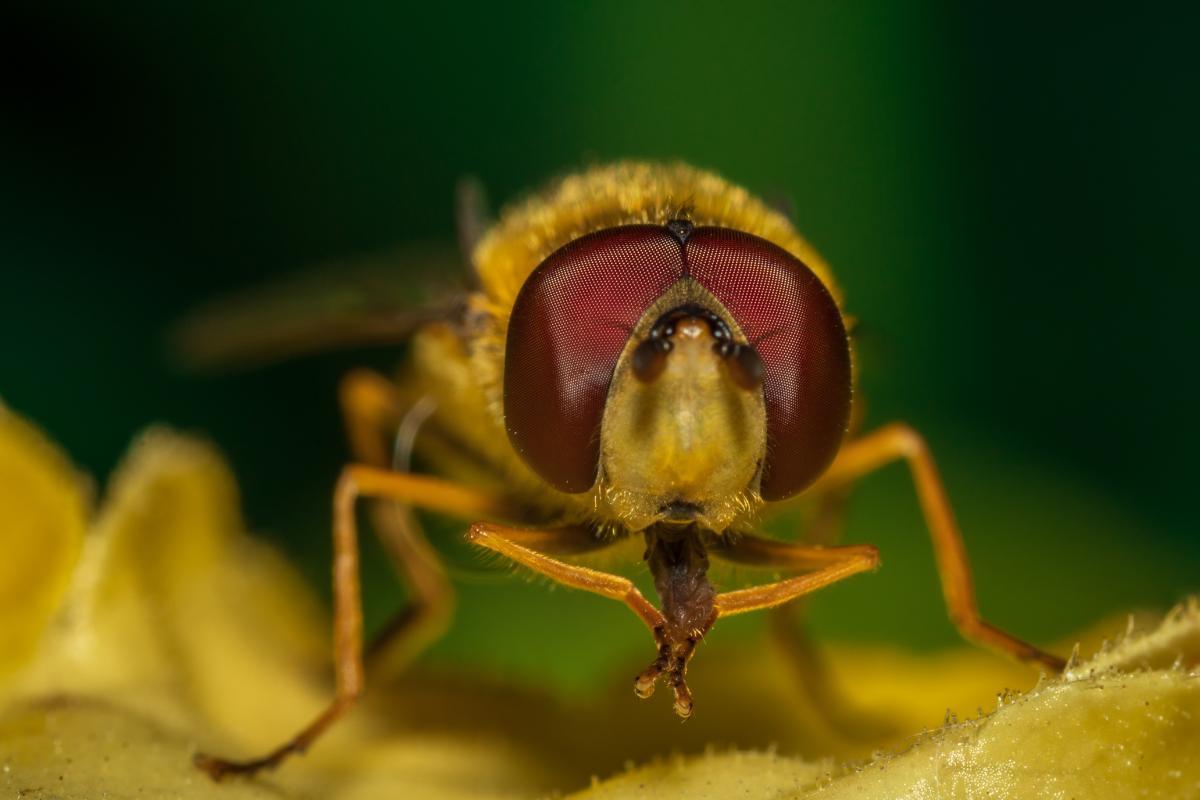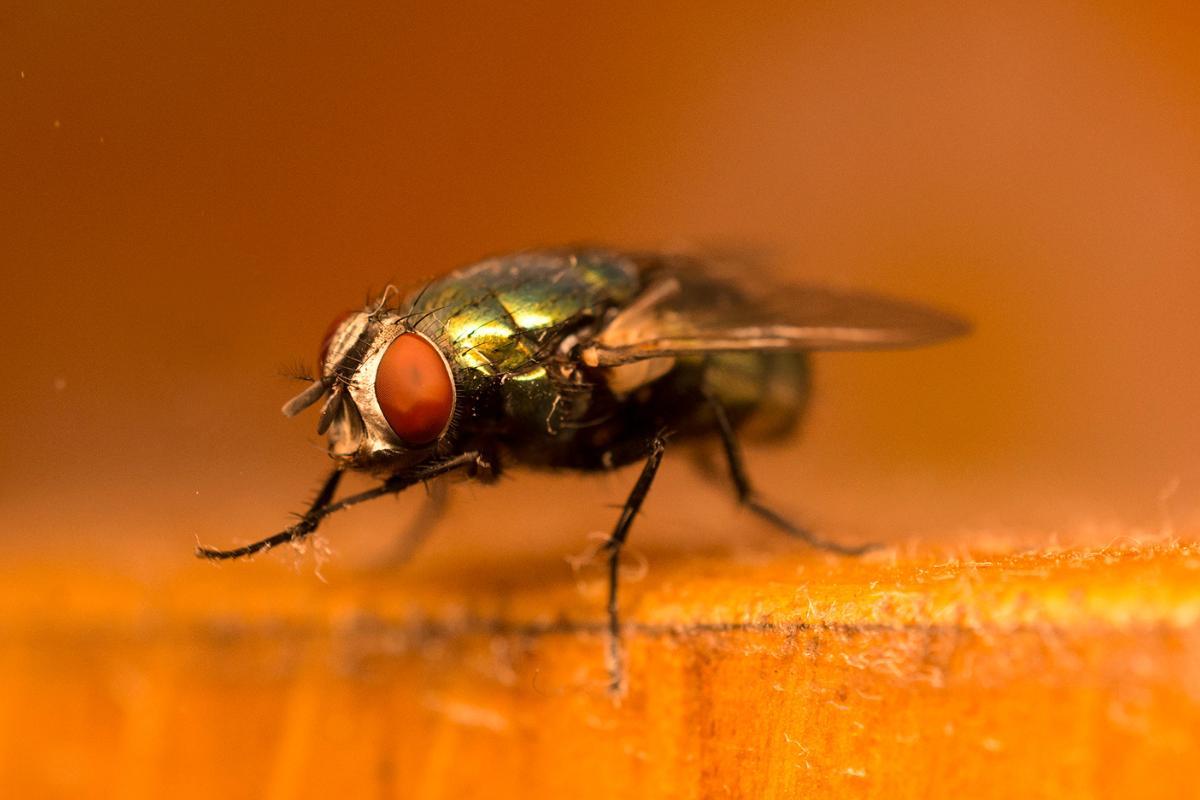Why Do Flies Rub Their Hands Together?


When a fly rubs their hands, it may seem like they are just passing some time. Flies are insects in the order Diptera that are associated with being annoying and even spreading pathogens. However, flies are an incredibly important member of their ecosystem. Without them, many ecosystems would fall apart, such is their essential role. While the common name of flies refers to their flight ability, they have many more behaviors and characteristics which allow them to function as they do.
Rubbing hands may seem like a trivial behavior, but it is part of a complex set of interactions which allows them to interpret their environment accurately. thedailyECO learns more about this behavior by asking why do flies rub their hands together?
Why do flies rub their hands together?
The diet of flies means they will consume a wide range of foods. This includes fruit, secretions from flowers and even decomposing animal matter and feces. These foods are often wet and sticky, so flies will rub their hands together to clean themselves. If they do not clean them, particles of food, dust and other contaminants can interfere with their senses. In particular, this can cause incoordination within their environment.
It is important to note that flies do not have actual hands. While they may look dexterous, the hand rubbing we can see in flies is actually their two front legs. As with all insects, flies have six legs in total, but it is the front pair they use to interact with their mouth parts. Back legs will be used to reach other parts of their body.
Cleaning is not the only reason flies rub their hands together. Another important aspect in the rubbing of the legs of the flies, the detection of chemical substances. This sensory ability is thanks to the hair-like structures on their legs known as setae. Setae contain receptor cells which are sensitive to chemicals in their environment.
Each sensory seta is associated with a sensory neuron that responds to a specific type of chemical compound. These neurons transmit the chemical signals to the fly's central nervous system, enabling it to interpret and respond to the detected chemicals.
By rubbing their legs together, flies release small amounts of chemicals and spread them into their environment. The chemicals released by flies through hand rubbing can have several functions. For example, they can mark a food source as a safe place to feed, communicate their presence to other flies, establish their territory or even attract a mate. These chemical signals are interpreted by other flies of the same species. They are essential for the communication and social behavior of flies.
In short, flies rub their legs for two main reasons:
- Cleaning: they need to clean unwanted particles from their legs to ensure their health and communication remain intact.
- Signaling: They release and detect chemicals that play a crucial role in their behavior, communication and survival. Such behavior allows them to interact effectively with their environment and with other individuals of their species.
As we can see, flies rubbing their hands together is a very important behavior. Not all flies will do it in the same way or to the same degree. It will depend on their individual needs.
Before we find out about specific fly species, you may want to check out our related article on the life cycle of flies.

Do all flies rub their hands together?
Although leg rubbing is a behavior observed in many species of flies, not all flies do it in the same way or with the same frequency. The presence and intensity can vary depending on the species and the context in which they are found.
Flies in the family Muscidae include the housefly (Musca domestica) and the fruit fly (Drosophila melanogaster), two of the most common fly species. Both are known for their tendency to regularly rub their legs together. These species are widely distributed and found in a variety of habitats, where they feed on a wide range of organic resources.
Other species, such as horseflies and stable flies, show a less pronounced rubbing behavior. This may be due to their eating habits. They are characterized as being types of hematophagous animals, meaning they feed on the blood of vertebrates.
There are also differences in hand rubbing between members of the same species. This is the case with males and females, especially when mating. In some fly species, males may rub their feet together to release pheromones that attract females. Females may rub their hands together to assess these pheromones and the males for potential mates.
Learn more about other fly behavior with our article on how insects breathe.

Other facts about flies
Now we know why flies rub their hands together, you may want to learn more about fly behaviors. The following fun fly facts help you do just that:
- They have excellent vision: flies possess compound eyes consisting of individual facets, each of which is sensitive to light. These facets allow them to have a panoramic view and quickly detect movements in their environment. To maintain sharp and clear vision, flies constantly clean their eyes by rubbing their legs over them.
- They have specialized mouthparts: the mouthparts of flies are adapted for sucking, licking or piercing. Many feed on decomposing organic matter, others on sugary substances from ripe fruits and some are hematophagous, since they bite and suck blood. Bloodsucking flies have a specific mouth apparatus to enact this behavior.
- Their life cycle is holometabolous: the life cycle of a fly consists of four phases which are the egg, larva, pupa and adult or imago stages. The time it takes to complete this cycle varies depending on the species. Some can complete it in just a few days, while others take a month or two.. The average life of a fly is in the range of 15 to 25 days. This period can be greatly affected by environmental conditions and the availability of resources.
- They play a fundamental role in ecosystems: some species, such as houseflies, play a fundamental ecological role in the decomposition and recycling of organic matter. They are also the food of many species such as birds and rodents, contributing an important link in trophic networks. Some species, such as tachinids, function as biological controllers by parasitizing potentially harmful insects on crops. Others are pollinators. Discover more with our article on what animals pollinate?
- They can carry disease: as flies are associated with fecal matter or decaying animal food (particularly at human-generated disposal sites), flies can carry disease by contaminating food by landing on it .
You have already discovered why flies rub their hands or legs together. You may want to know more about other members of the order Diptera with our article on the different types of mosquito species.
If you want to read similar articles to Why Do Flies Rub Their Hands Together?, we recommend you visit our Facts about animals category.
- Alberto, J. V. C.(2020). BIOLOGY AND REPRODUCTIVE BEHAVIOR OF THE FRUIT FLY (Ceratitis capitata) IN THE PROVINCE OF GUAYAS–ECUADOR (Doctoral dissertation, UNIVERSIDAD AGRARIA DEL ECUADOR).
- Perez, M. M. (2006). Study of the external morphology of adults of the hunting fly Coenosia attenuata Stein, 1903 (Diptera: Muscidae), and first report for Colombia. Magazine of the Faculty of Basic Sciences, 2(1), 68-87.
- Montoya, P., Toledo, J., & Hernández, E. (2020). Fruit Flies: Fundamentals and Procedures for their Management, S y G editores, Mexico City. pp. 71-116.







